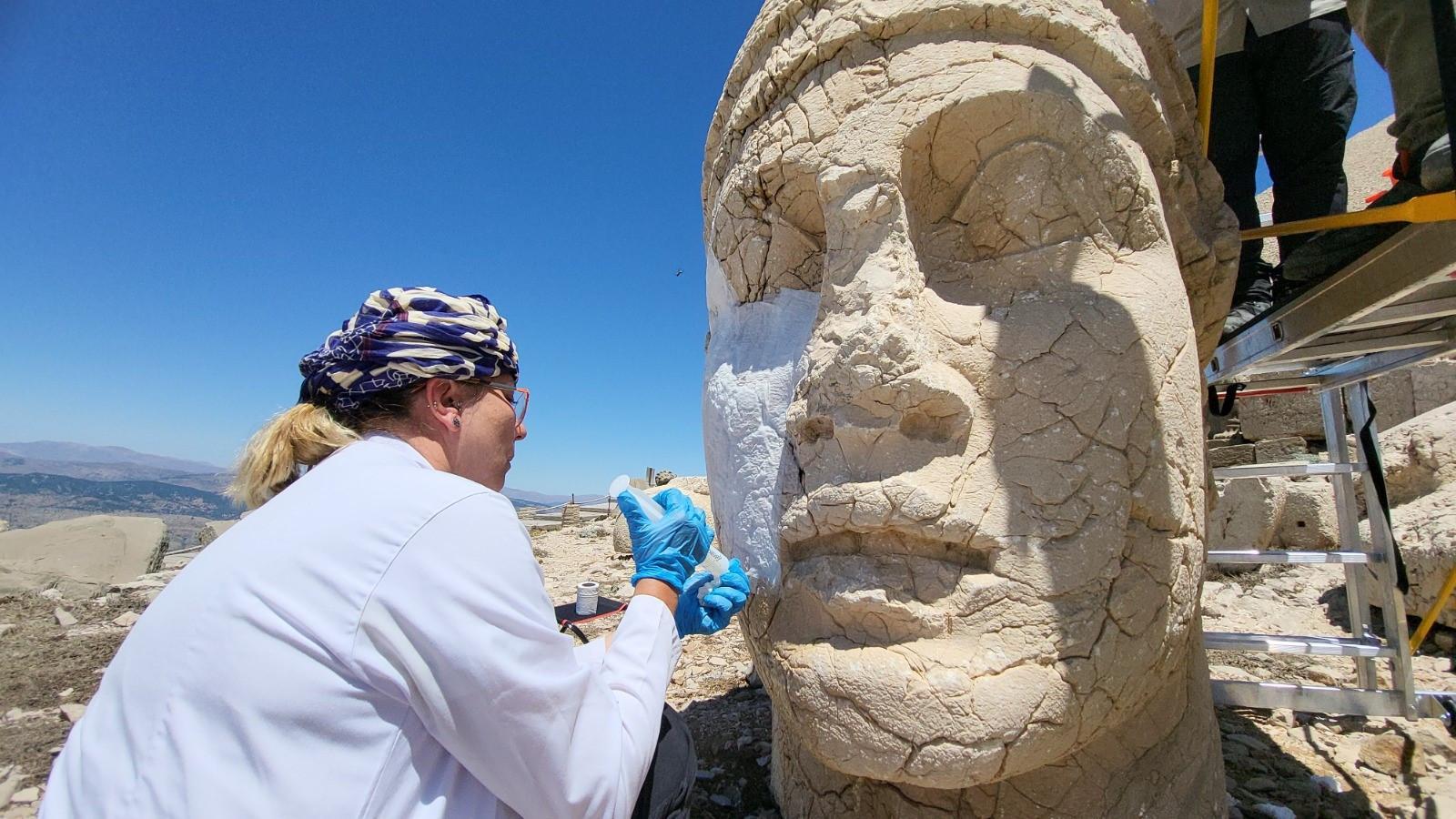
The symbolic statues on Mount Nemrut, listed as a UNESCO World Heritage site, are being preserved with a nano-lime technique following successful trials conducted in 2022 as part of ongoing restoration and conservation efforts.
The initiative, aimed at safeguarding the colossal sculptures for future generations, was expanded after the positive outcome of initial applications, which targeted microcracks on the surfaces and interiors of the monuments situated 2,206 meters above sea level.
This year, experts from the Gaziantep Regional Laboratory for Restoration and Conservation and the Adıyaman Museum Directorate have intensified work on the western terrace of the mountain, focusing on two of its most iconic sculptures — the Eagle Head and King Antiochos I.
The procedure begins with the cleaning of surface dirt layers on the sculptures. A nano-dispersed calcium hydroxide solution is then injected into cracks using syringes. These aesthetic fillings are designed to block atmospheric moisture, such as rainwater, from penetrating the stone.
The month-long project aims to reinforce the structures from within without altering their natural appearance.
Ayşe Ebru Çorbacı, director of the Gaziantep laboratory, told Anadolu Agency that previous applications on the foot of the Heracles statue had yielded positive results.
“We observed the effectiveness of the method during follow-up assessments after our 2022 pilot studies,” Çorbacı said. “That’s why we are planning a comprehensive restoration in 2025. The nano-lime solution will strengthen the stones internally and prevent water ingress, but the fillings will not fully conceal the cracks. Visitors will still be able to see the natural texture.”
Adıyaman Museum Director Mehmet Alkan added that the work is intended to ensure the statues remain structurally sound for many years to come.
Mount Nemrut is a 2,134-meter-high mountain notable for the Hierotheseion (temple-tomb and house of the gods) built by the late Hellenistic King Antiochos I of Commagene (69-34 B.C.) as a monument to himself.
With a diameter of 145 meters, the 50-meter-high funerary mound of stone chips is surrounded on three sides by terraces to the east, west and north.
Giant heads, weighing in at 6 tons are a full 10 meters tall, built in the look-out over an incredible sunrise and sunset every day.